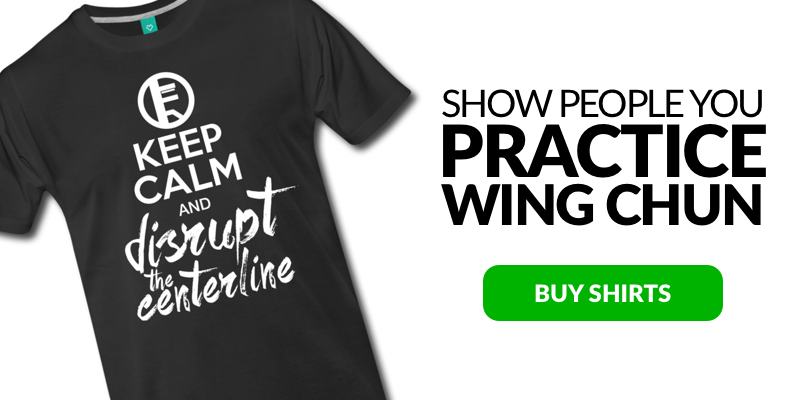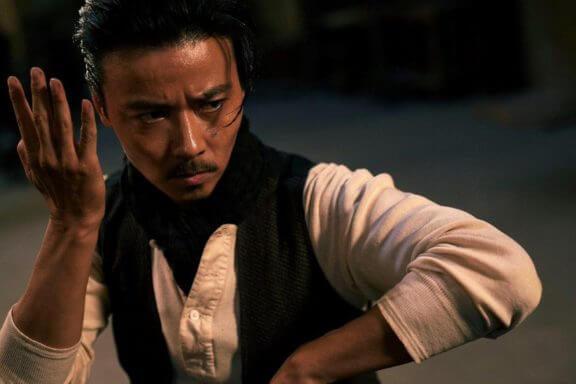Let’s Talk About Biu Tze
Biu Tze is the third open hand Wing Chun form I learned.

Let’s do Biu Tze together!
Before we do, I want to tell you why I share my forms.
It’s a way to…
- Review my form – It’s a good way to spot any mistakes I make. It also lets me see the things I can work on to improve my form.
- Get feedback – Getting feedback, from viewers like you, helps a lot because you guys can spot things I don’t notice. Plus, it’s always nice to receive constructive feedback!
- Help others – When I first started Wing Chun and learning the forms, I had a lot of trouble memorizing the movements and I often mix up parts of the form. I think having a visual reference helps a lot! For me, I found a book called Wing Chun Kung Fu that had photos of all the open hand forms. But I believe, watching a video is much more useful. So I hope this can help you when you’re forgetting sections of the form.
Let’s get into the Biu Tze form! If you know the form, feel free to follow along!
The 3 Elbows of Wing Chun
They may look subtly the same but each elbow does something different but there are actually 3 elbow strikes used in the Biu Tze form.
- Pinning Elbow – It is used to pin my opponent. It’s done by bringing my elbow up, around and over my opponent, then onto their chest. It’s essentially an elbow strike to the chest. The key thing is to neutralize my opponent’s two arms and strike.
- Striking Elbow – This starts off similar like the Pinning Elbow but instead of just going around the opponent, my elbow goes straight for the strike. This should be done while inside my opponent’s space.
- Blocking Elbow – Is done from the outside for blocking strikes or striking behind my opponent’s head in an intimate range.
Elbow Strike Your Opponent
An elbow strike can devastate your opponent but it does have a few weaknesses:
- You need to be extremely close ranged to land an elbow
- Your centerline is no longer facing your opponent
That being said, I never lead an attack with my elbows. I think the best way to use an elbow strike is when you follow it up from another strike. For example, I use Lop Sau to pull my opponent towards me, while disrupting their centerline, then I drive my elbow into them as I am pulling.
Also keep in mind that elbows should only be used close range and not from a far because elbows have shorter reach than a punch so you lose half the distance.
I show two examples here:
Elbow Strikes in Biu Tze
Here’s how the 3 elbow strikes are used in Biu Tze.
To understand that, I want to quickly go over the Elbow Strike part of Biu Tze.
In the Biu Tze form, when we complete an Elbow Strike, the hand, of the arm that elbows, grabs the opponent and Lop Saus. The momentum from the Lop Sau brings the opponent towards my opposite Elbow Strike or Biu Tze.
With that said, let’s go through the 3 Elbow Strikes in the Biu Tze form.
- Pinning Elbow – Pin the opponent then Lop Sau, use that momentum to Pin from the outside. Then Lop Sau again to Pin from the other side. Then end with a Lop Sau on the inside to Biu Tze.
- Striking Elbow – This strike is done from the inside. Right after, I go for the Lop Sau on the inside and Biu Tze.
- Blocking Elbow – This is a block from the outside into a Lop Sau on the inside then Biu Tze.
As with any new ideas, I recommend testing them to see if they work for you. If they do, add them to your library of techniques. If not, discard them. Let me know how it works out for you.
Additional Notes
General
- Biu Tze can be used to block and strike simultaneously as it is the straightest path to inflict a lot of damage while defending.
- Add a torque to every movement even when grabbing.
- The fingertips when Jum Sao begins and ends should be on the same line and be at the same height as the fingertips with Tan Sau.
- Practice elbow strike + grabbing.
- The ending swinging arms are 3 forward and on the 4th, go all the way down.
- Biu Tze starts from elbow not the armpit.
- Grab + elbow happens at the same time in one motion.
- Fist to chest is pulled all the way back, even in Chi Sao counters.
- The final position of an elbow strike should end with wrist lower than the elbow.
Biu Tze
- Any chop in the form is to the opponent’s neck. When striking, the arms should be visible to yourself and not past your back.
Three elbows
- The first elbow in the form is over and down on the opponent’s center line.
- The second strikes, from the top to bottom, diagonally across the opponent.
- The third elbow cuts right across.
Elbow drills (Chi Sao)
- While rolling, resting hand grabs and the rolling hand strikes with elbow over the opponent’s rolling hand.
- The elbow behaves as a pin to the opponent but should be used as a close quarter strike in a live situation.
Foot work
- Lead the opening of the form with the toes.
- The movement is used to sweep opponent’s leading leg.


